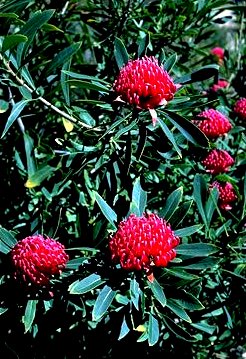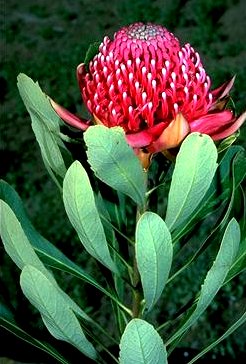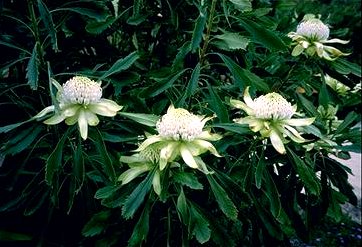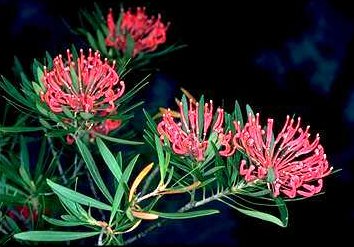
Monga Waratah (T. mongaensis ) |
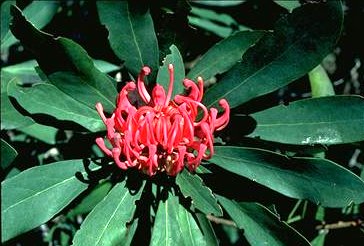
Victorian Waratah (T. oreades ) |

Tasmania Waratah (T. truncata ) |
Propagation
of Telopea
Waratahs can be grown from cuttings but the more usual way is from seed. Fresh seed has a high viability and germinates in 2-3 weeks after sowing. Plants should be potted up as soon as they are large enough to handle and grown in a sheltered position. When selecting a plant for planting into the garden ensure that it is at least 15 cms (6") tall. Plants of this size should have a noticeable swelling at the base of the stem where it enters the soil. This 'swollen'; tissue is called a lignotuber and it contains numerous dormant buds. When established in the ground old canes can be cut right back to the lignotuber which will promptly sprout new stems. This is an evolutionary adaptation to some of the extremes of the Telopea environment (particularly bushfire) which ensures the plants's survival. Of the four species, T. mongaenis has proved to be the most easily established in cultivation. Several waratah cultivars, some of them hybrids between the T. mongaensis and T. speciosissima are beginning to be available at local nurseries |
